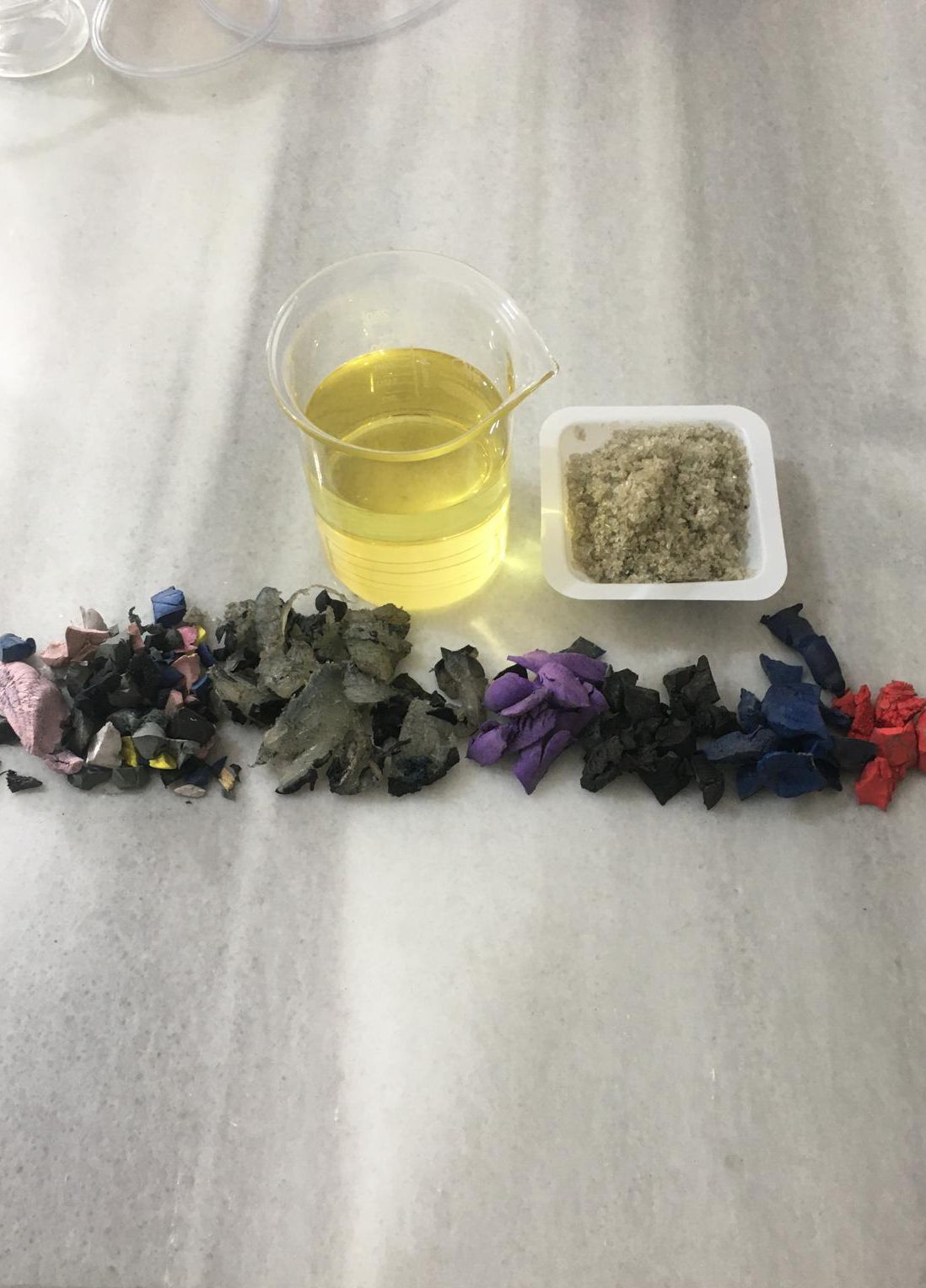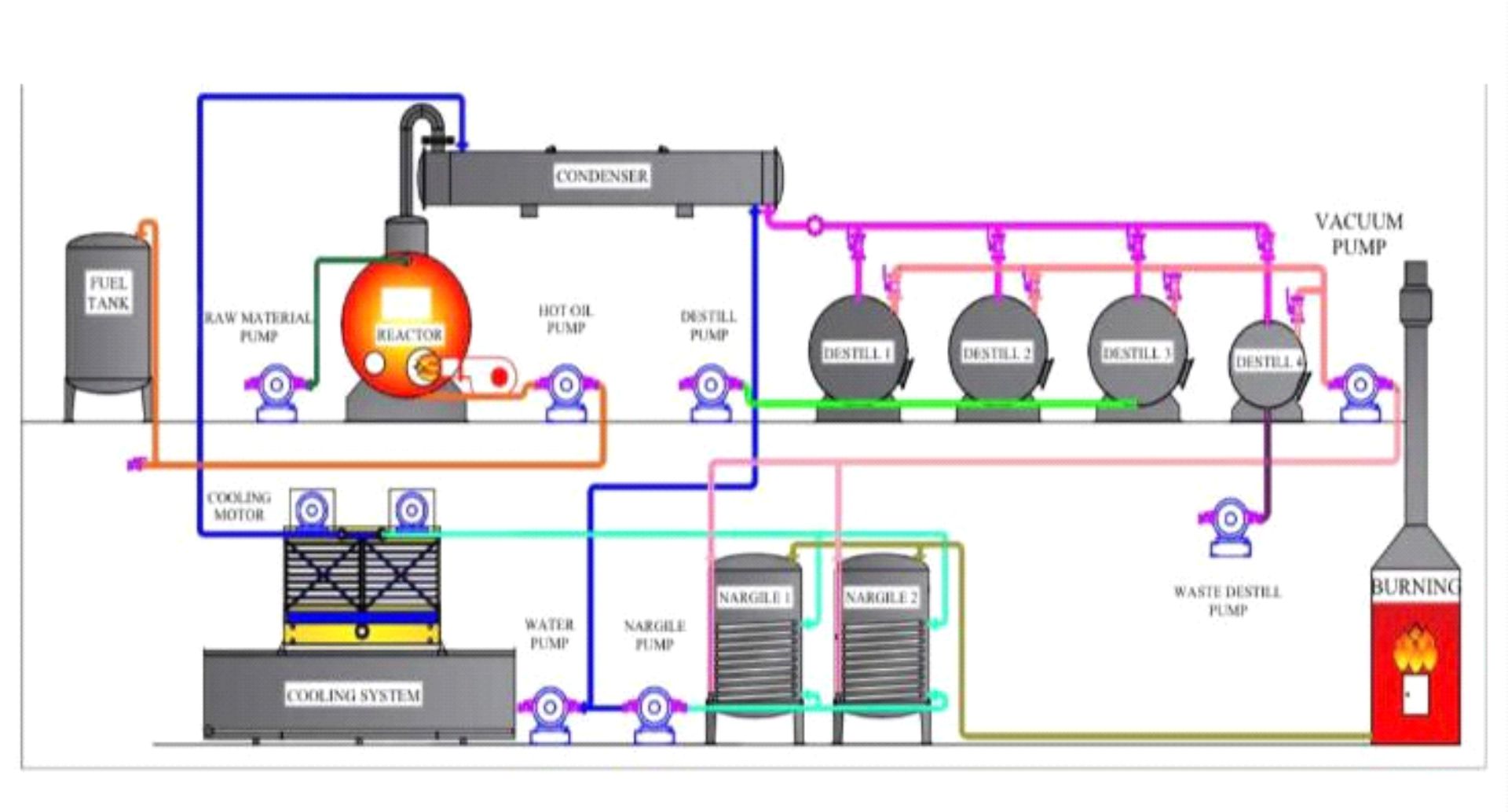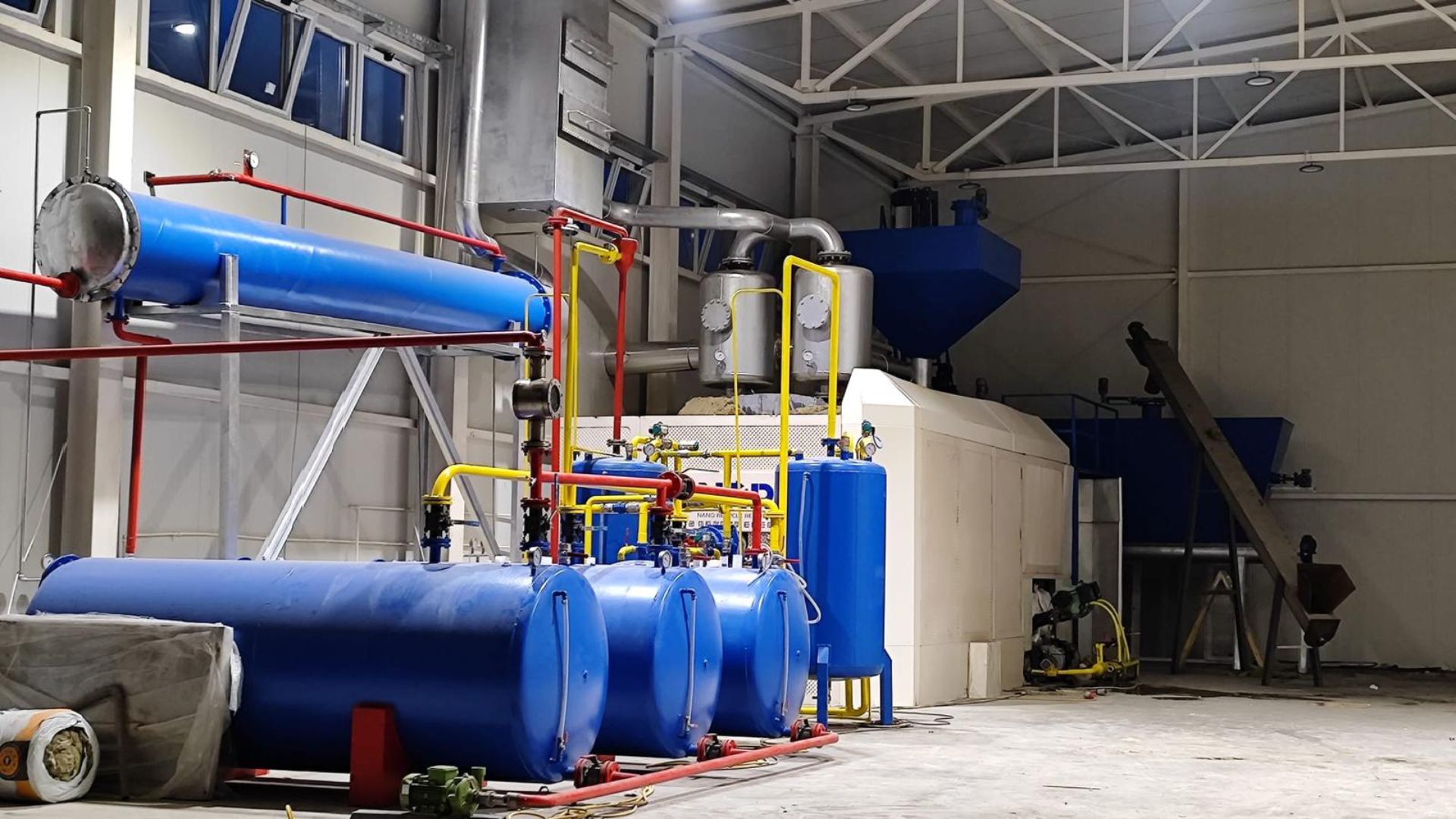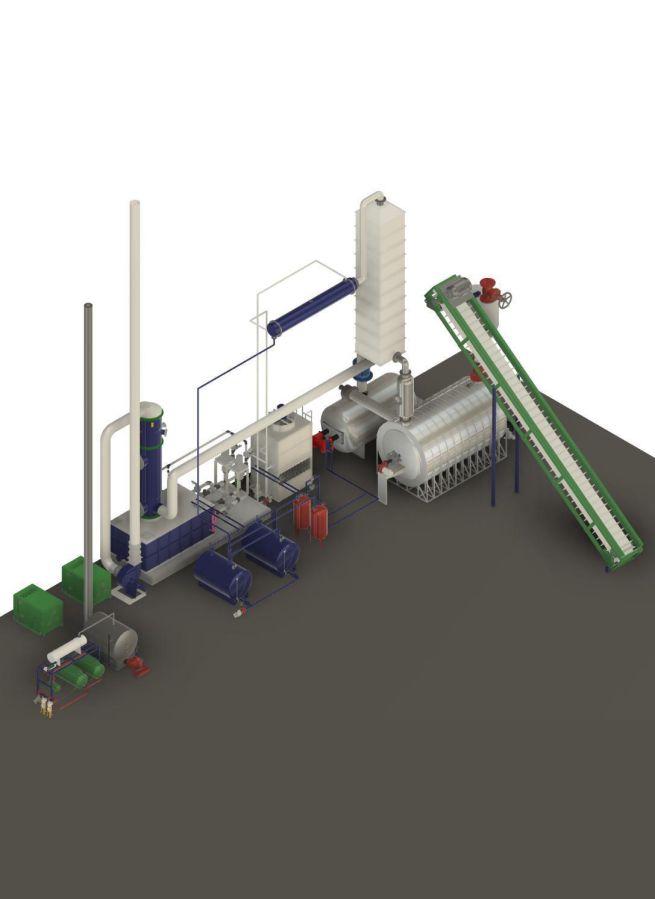ITACA PLANT
The İTACA project represents a groundbreaking approach to addressing the global challenge of non-recyclable plastic and tyres waste. By leveraging state-of-the-art pyrolysis technology, this innovative solution provides a method to not only dispose of waste plastics and tyres responsibly but also to transform them into valuable resources with significant economic and environmental benefits. Operating under zero carbon emission conditions, the project ensures compliance with the highest environmental standards while actively supporting global sustainability initiatives, such as the Green Deal.
At its core, the İTACA project aims to redefine how non-recyclable plastics and tyres are perceived—not as waste, but as resources with immense potential. Through the pyrolysis process, plastics and tyres are efficiently converted into pyrolytic oil, synthetic gas (syn gas), carbon black, and electricity. These products have wide-ranging applications across various industries, from energy generation to manufacturing, making the process both economically viable and environmentally sustainable.
The transformation of plastic and tyre waste into high-value outputs directly contributes to the principles of a circular economy, where resources are continually repurposed and reused to minimize waste and environmental harm. By turning significant environmental problems into opportunities, İTACA not only helps mitigate the global plastic and tyre crisis but also sets a new benchmark for innovation in waste management and resource recovery.

Global recycling
The İTACA system fully complies with Green Deal principles and promotes a circular economy by transforming non-recyclable plastic and tyre waste into valuable resources. Its innovative approach combines energy efficiency, environmental safety, and optimal use of byproducts, contributing to a more sustainable future.
İTACA represents a benchmark in plastic and tyre waste management, integrating technological innovation, environmental responsibility, and economic value to address global recycling and sustainability challenges.
Project Objectives
- Production of high-quality pyrolytic oil, refined into gasoline and diesel for use in internal combustion engines.
- Recovery of carbon black, a reusable material for industries such as paints, inks, asphalt, and tires.
- Utilization of synthetic gas generated during pyrolysis to meet the system's energy needs.
- Electricity generation using the diesel produced through the distillation process.
Pyrolytic Oil Distillation Unit

The pyrolytic oil from the pyrolysis unit is fed into the reactor of the distillation unit via a hose. The pyrolytic oil in the reactor is heated by the oil burner. As the temperature rises, the pyrolytic oil evaporates. The solvent type fuel, which evaporates at temperatures between 60-140 degrees, is distilled from the heat exchanger and collected in the first collection tank. The diesel type product, which evaporates between 140-250 degrees, is distilled from the heat exchanger and collected in the diesel tank, which is the second collection tank. At 250 degrees the distillation burner is manually switched off. The bottom product (fuel oil mazut) that settles at the bottom of the tractor is manually lifted into the fuel tank of the burner to be used as burner fuel. During the distillation process, the SYN gas, which comes out of the reactor with hydrocarbon gas but does not condense, and the exhaust gas, which is formed for the purpose of heating the reactor, are collected with a single pipe, sent to the scrubber unit connected to the pyrolysis unit, washed, cleaned and returned to nature clean.

A Scalable Solution for Global Challenges
With millions of tons of plastic and tyre waste generated annually worldwide, the İTACA system offers a scalable and practical solution to a pressing global issue. Its modular design and reliance on advanced automation make it adaptable to various regions and contexts, from urban centers to remote areas. By prioritizing sustainability and zero emissions, İTACA is setting a standard for waste management technologies that can be adopted globally, contributing to cleaner environments and more resilient economies.
Economic and Environmental Impact
The İTACA project exemplifies how innovative technology can bridge the gap between economic growth and environmental preservation. By converting non-recyclable plastic and tyre waste into high-demand products like fuels and industrial materials, the system not only reduces the environmental footprint of plastic and tyre waste but also creates economic opportunities across multiple sectors. Industries reliant on raw materials, such as energy, manufacturing, and construction, benefit from these outputs, making İTACA a model of sustainable industrial symbiosis.

Process Stages
Description of the manufacturing process
- Material Preparation: Plastic and tyre waste is shredded into granules or chips and fed into the reactor.
- Pyrolysis: The prepared material is heated to 300–350°C in an oxygen-free environment, separating hydrocarbon vapor and carbon black.
- Filtration: The hydrocarbon vapor passes through filters and scrubbers to ensure environmental safety.
- Condensation: The hydrocarbon vapor is condensed into pyrolytic oil and stored.
- Distillation: Pyrolytic oil is refined into gasoline, diesel, and burner fuel.
- Carbon Black: Recovered carbon black is repurposed for industrial use, such as in rubber manufacturing and pigments.
- Energy Generation: Refined diesel fuels generators, while residual heat and syn gases are reused within the system.
- Environmental Safety: A closed-cycle system ensures no harmful emissions, with advanced automation enhancing efficiency and safety.

